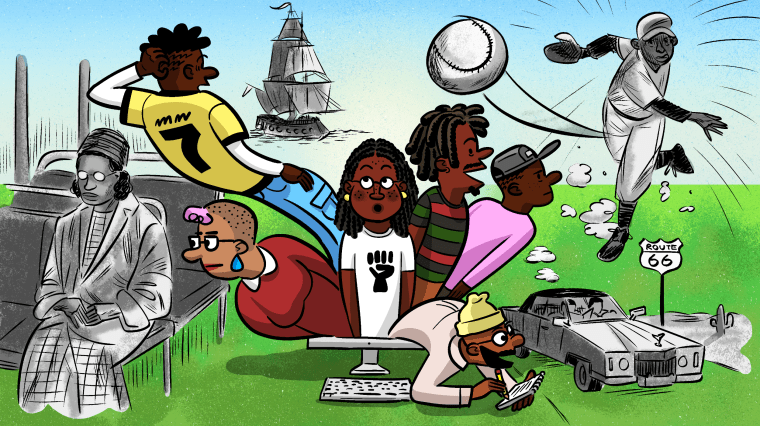Third-grader Mya Alvarado would not be born for another five decades when Martin Luther King Jr. gave his historic “I Have a Dream” speech in 1963. But instead of relying on history books and videos to learn about it, Mya, from Irvington, New Jersey, recently wore her virtual reality headset and transported herself back in time to see and hear King’s speech in the metaverse, via the Time Studios' project “The March 360.”
What stood out to Mya, 8, was King standing at his podium, surrounded by sparkles while talking about his “dream that his children were treated fairly,” she said.
Watching the iconic scene up close, Mya said, made her feel “confident.”
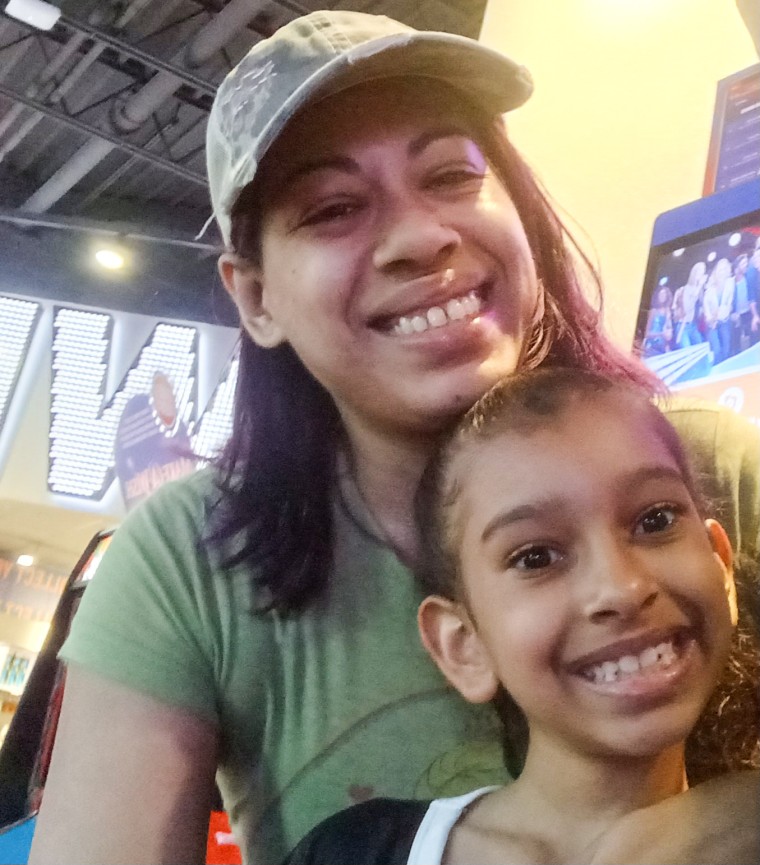
In an effort to promote a more comprehensive education of Black history among young people, creatives and educators are harnessing new methods like virtual reality. Morehouse College launched its first Black history course in the metaverse this year, virtually taking students on a slave ship, and to the Civil War and World War I battlegrounds where Black soldiers fought. It’s one of countless projects promising to bring users to a moment in time — and with more than 400 million metaverse users per month, there is a solid chance Mya’s experience in January won’t be her last.
Mya’s mother, Cynthia Serrano, 38, is no stranger to the metaverse either, as she attends concerts from artists like the Notorious B.I.G., John Legend and Foo Fighters through Meta Horizon Worlds. But King’s speech was her first time experiencing a historic event in the metaverse, she said.
“It’s not really something kids search for,” Serrano said of the landmark speech. “So, to actually see it live in your face, it was just amazing.”
A unique way to see the past
Often used for video gaming, the metaverse is a virtual space where people can interact with others in shared digital experiences for learning, leisure or entertainment. Some popular metaverse platforms include The Sandbox and Horizon Worlds, created by Meta, the parent company of Facebook and Instagram. Users gain access into the metaverse through a virtual reality headset, which includes goggles and a joystick that allow them to both see and move freely in the space.
Companies are recreating historic moments too, and Black creatives like artist Gabe Gault are partnering with them to help tell Black heritage stories.
Gault, who is based in Los Angeles, worked with Meta last February and launched “I Am A Man,” a virtual reality exhibition that paid homage to Black figures like Rosa Park, the Tuskegee Airmen and King. One of the iconic sites recreated in the experience includes the Lorraine Motel, where King was assassinated in 1968.
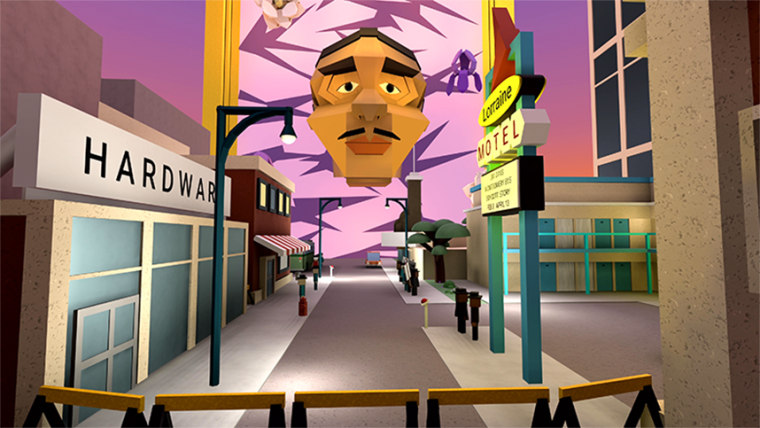
“I really wanted to put people in the shoes of where people through Black history have been in already,” Gault said, “and I wanted people to experience it up close and be able to interact with it in a new and fresh way.”
Gault’s virtual reality project took two months to complete and attracted people of all ages and races, he said. In addition to his “I Am A Man” project, Gault said he has also painted murals in the metaverse.
What intrigues Gault the most about the metaverse is the ability to “create something you couldn’t really create in the real world,” he said. The tool also makes it practical for people to create these experiences without spending a lot of money, he added.
The metaverse is attracting many Black-led organizations, like Route History, a museum based in Springfield, Illinois, that explores the history of Route 66 through the past experiences of Black travelers. In May, Route History will launch a metaverse experience allowing visitors to see the world from the perspective of four Black characters traveling along Route 66.
The project will include a baseball player traveling with his team, a blues singer traveling with her backup singer, a family of four and a World War II veteran.
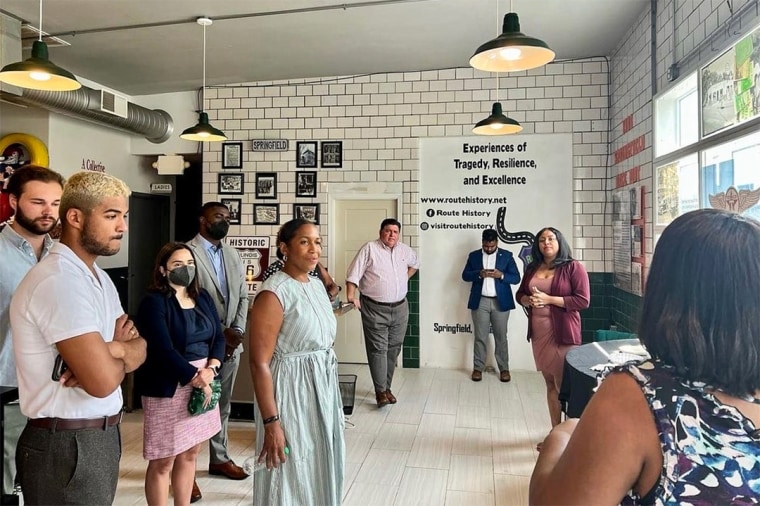
“We knew that there were so many stories of inspiration, and blueprints that have been laid on how we can develop our community and take better care of one another,” Gina Lathan, the founder of Route History, said. “But unfortunately, it had never been formalized in such a way that it told the story of our greatness.”
State Sen. Doris Turner, a champion of preserving Route 66’s Black history, said that using this “platform of the day” would help continue the tradition of sharing oral history in Black communities.
“More often than not in the African American family, our history is passed down through oral history — through talking to your aunts and your uncles, and your grandmothers and great-grandmothers around family events,” Turner said. “And we’re losing some of that. So, this is an opportunity to spur those conversations.”
Route History’s vice president, Stacy Grundy, said the new metaverse experience could also help local Black children take pride in their region’s history.
“When you look at these communities that the Green Book businesses were in, a lot of them today are some of the most distressed communities in the state,” said Grundy. “Because of that, the children who live in these communities — they don’t even know a community that looked like that 100 years ago. They have no idea of the prosperity of the people that walked the same streets as they did. So, this was a huge opportunity for us to recreate that and for them to be inspired and to be proud of their community and so that they see that someone before me already laid the groundwork and so now, they have that opportunity to do the same.”
What the future of the metaverse looks like
The metaverse may serve as a space for many young people to learn, but the number of those interested — including adults — is expected to rise, with more than 74% of U.S. adults joining or considering joining, according to Bankless Times.
In a a Pew Research Center survey of 624 technology innovators, developers, business and policy leaders, researchers and activists, 54% said they expect the metaverse will be a more refined, immersive, aspect of daily life for a half-billion or more people globally by 2040.
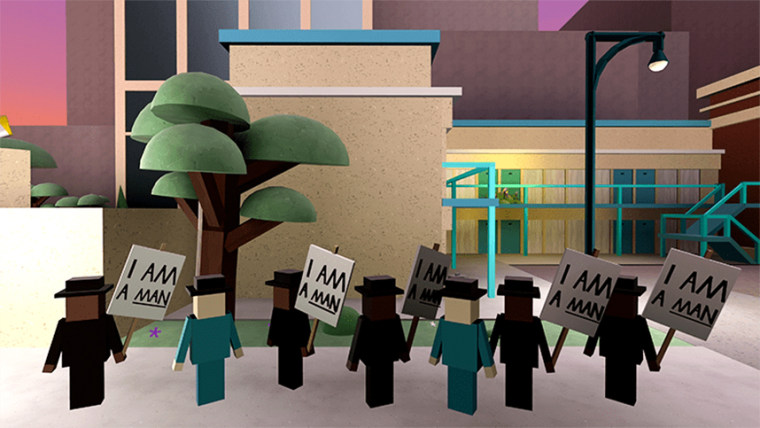
Gault said while some people are still trying to grasp the idea of the metaverse, many people are using the space every day and he expects people will have more experiences in the metaverse in the future.
“I think history always repeats itself,” Gault said. “And I think that it’s important to always stay refreshed with even the little things that reference back to current events all the time.”
As for parents like Serrano, she can also see the metaverse as a tool to teach subjects in the future to children like her daughter, who said she wants to see Rosa Parks in the metaverse. Serrano, who is Puerto Rican, also said that although she is not Black, “if we were growing up in those times,” because of her skin color, “we would be treated pretty much the same way.”
That’s why teaching her daughter about Black history is so important, she said, and if it is by means of the metaverse, then she’s all for it.
“I’m always learning, and I hope she’s always learning,” Serrano said, “and I feel like that’s the best way to get people involved, even if it’s a cool way like the metaverse.”
